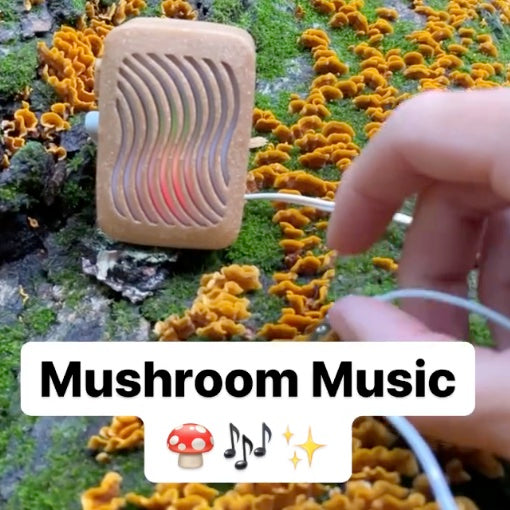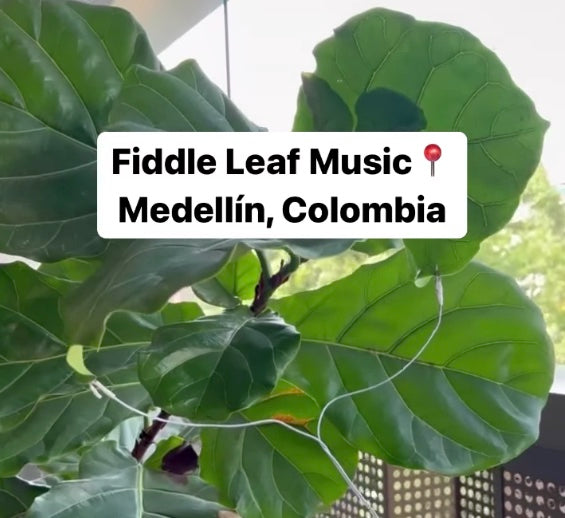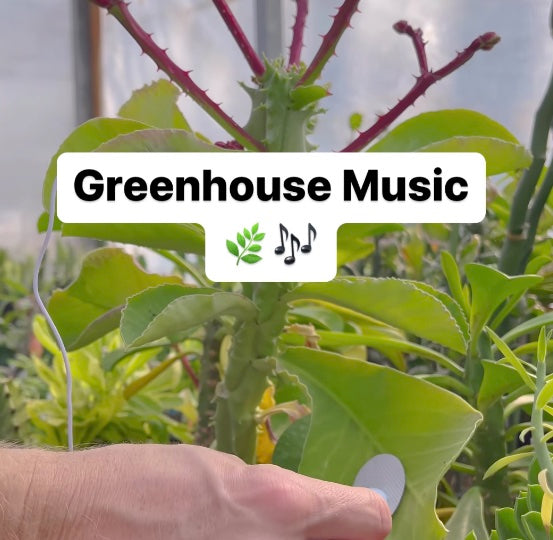Contact Us


Most Popular Questions
Why listen to plants?
The practice of taking time to listen to plants can help take a person out of the busyness of their day. It becomes a ritual where the focus moves away from the "to-dos" and towards harmony with nature. By slowing down to tune into the subtle changes in plant music, we access a state of heightened presence in the moment. Feelings of increased presence are associated with stress reduction, increased creativity, clarity and openness.
What exactly is being measured?
PlantWave measures microfluctuations in conductivity between two points on a plant. The amount of conductivity between these two points is largely related to how much water there is between them. That changes as plants photosynthesize and move chloroplasts around.
The variation is graphed over time, which produces a wave. We take that wave and translate it into pitch. Then those pitch messages are routed to control instruments we designed. So, each note you hear is an expression of a change happening within the plant in the moment. The greater the distance between two adjacent notes, the greater change is happening within the plant.
What inspired this idea?
Our inspiration for writing music always came from nature. We used to go out into the woods, record forest sounds and then go back into the studio to listen to the sounds, connect to the feeling of those natural places and write music from there. For us, creating music from plant data was just a natural progression of this practice. Instead of "sampling" the sounds of nature, we started sampling data from nature. Instead of having nature fuel the inspired playing of our instruments, we connected nature directly to the instruments with technology.
Are there proven benefits of listening to plants?
We haven't conducted peer reviewed studies yet. A survey of hundreds of owners of our previous device, MIDI Sprout, showed users feeling more relaxed, connected and inspired after listening to plants. The upgrades we're making with PlantWave will allow us to begin partnering with research institutions to do a more quantitative analysis on the effects of plant music.
More generally, there have been studies done on the effect of stochastic patterns (random, non-linear and non-repeating) on the health of the mammalian brain. If you're trying to envision what that means, just think of laying under a tree where the light from the sun is filtered by leaves and branches blowing in the wind. That phenomena you're experiencing (the seeming randomness of the patterns of light resulting from the tree and sun) is stochastic. In a similar way, plant music is stochastic in that it's taking a set of natural variables and presenting them to you as sound.
Concierge Help Center
Our concierge help Center is your personalized hub for all product-related queries, offering comprehensive guides on product usage, automated returns, and more.
Have additional questions? Fill out the form below





